I have been on the fence for years about an antique hutch that sits off my kitchen. From afar, it was amazing. Sadly, up close, the hutch had A LOT of problems!
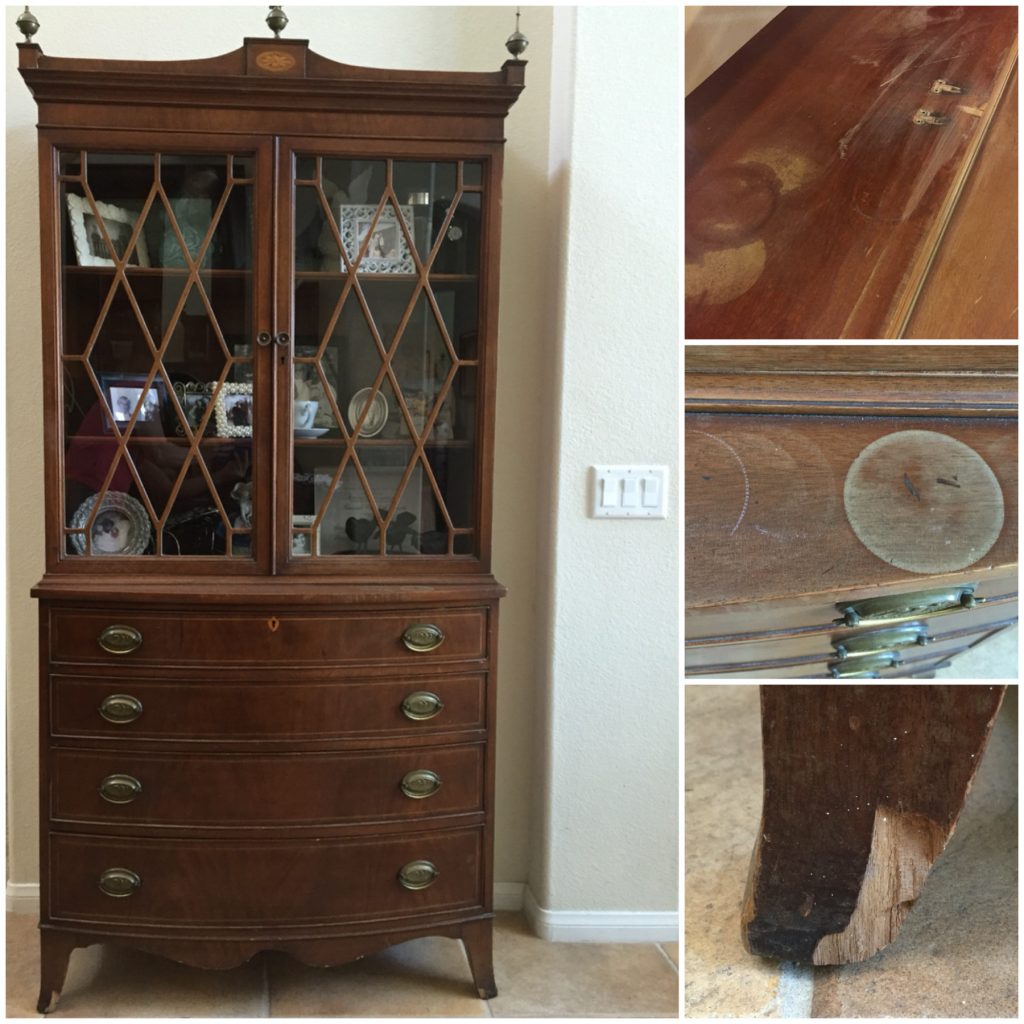
To bring the hutch back to its former glory would have been quite an undertaking, and truthfully, I was ready for something a little brighter. So, even though I believe many antiques should not be painted, this little guy was the perfect candidate for a makeover.
I began by disassembling the hutch:
- Remove doors and drawers
- Remove hinges, pulls and knobs
- Remove lattice work on doors
- Remove glass from doors
- Remove Hutch back*
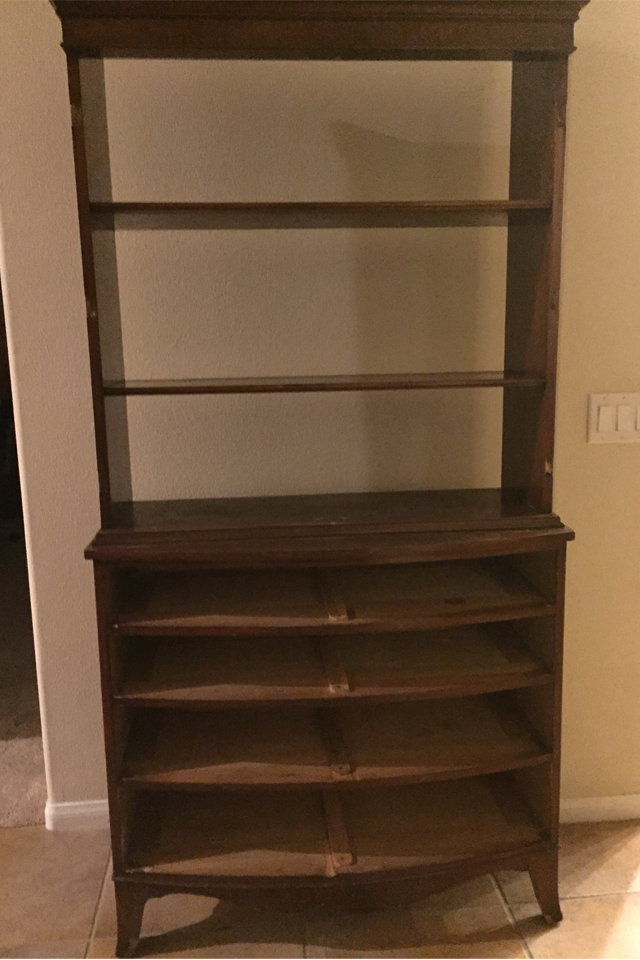
I do all of these steps with EVERY hutch I make over. It is a little more work on the front end, but I promise, it’s worth it! Here’s why:
- Typically with antiques, there is buildup of junk under pulls and hinges, so you want to get that cleaned off (I use Pine-Sol.)
- Sometimes the original hardware looks best! If you don’t like the look of the hardware once you’ve tried it on your painted piece, you can always paint the hardware at that point.
- It is way easier to remove glass than to tape it off and paint around. Besides, the finished piece just looks more professional.
- *Even if you don’t want to do a fabric or wallpaper back on your hutch, removing the back makes a hutch SO MUCH EASIER TO PAINT!

When it comes to antiques, I recommend NOT puttying or patching anything that doesn’t cause a problem structurally. I believe those parts tell the story of an antique and should not be covered, but rather highlighted. Secondly, patch and putty jobs typically look worse when painted.

I also always use a brush for antiques, even though the job would go much faster by using my chalk paint in a sprayer. Since paint sprayers didn’t exist when my antique was made, I think a brushed finish looks more authentic.
As always, I made my own chalk paint for this project using BB Frösch. I avoid any sanding, priming or stripping this way, and I can choose whatever color I want. Besides that, it is so much more affordable than pre-mixed chalk paint. I chose to paint the interior white (Benjamin Moore “Alabaster” mixed with BB Frösch Chalk Paint Powder) and the rest of the hutch a light minty blue color (Benjamin Moore “At Sea” mixed with BB Frösch Chalk Paint Powder.
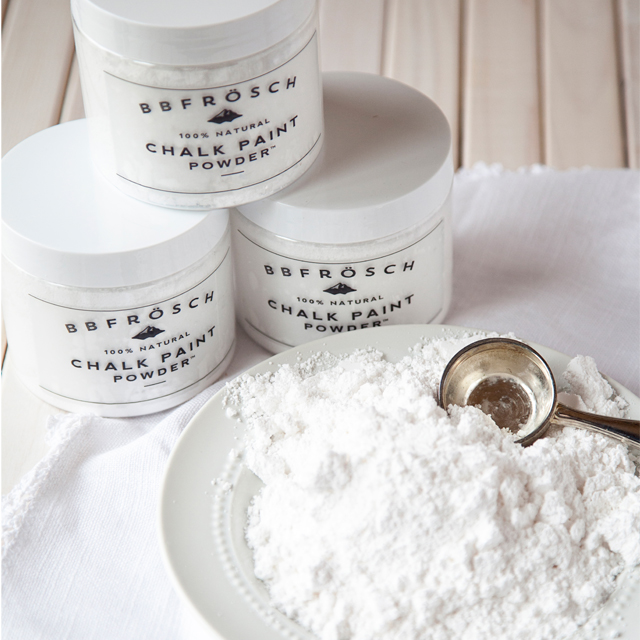
Notice the interior only has one coat of paint, while the exterior has two coats. What a difference that second coat makes!
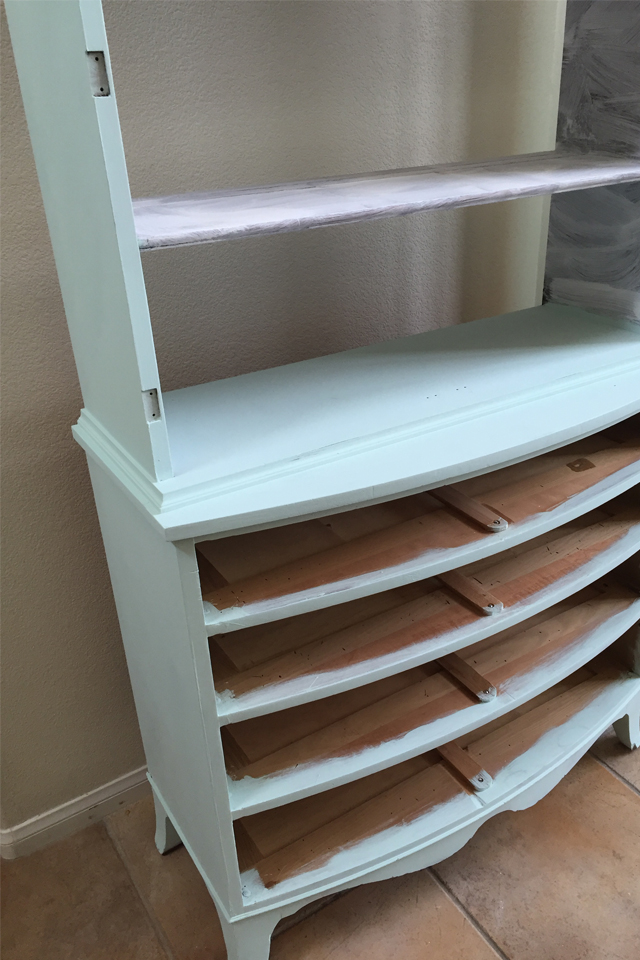
Once the hutch was painted, I did some minor distressing with 220-grit sandpaper. I didn’t want a shabby chic look, but again, I wanted to stay true to the integrity of the piece, and an antique like this wouldn’t have made it this far without a little distressing!
I waxed with BB Frösch Clear Premium Finishing Wax. This is my go to for ANY antique. To me, this is a more authentic finish since the poly urethane and poly acrylic finishes of today didn’t exist back then. Besides, I think wax just looks softer and prettier.
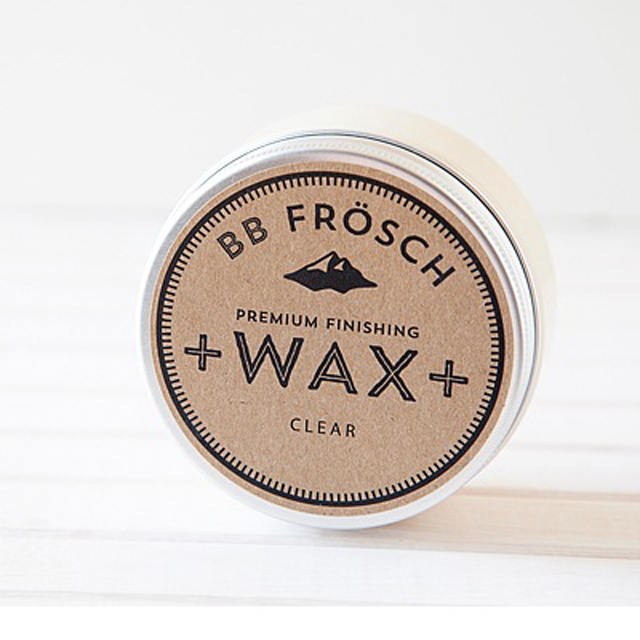
For the fabric back, I used a decorator fabric I snagged on clearance at Hobby Lobby for just $7.
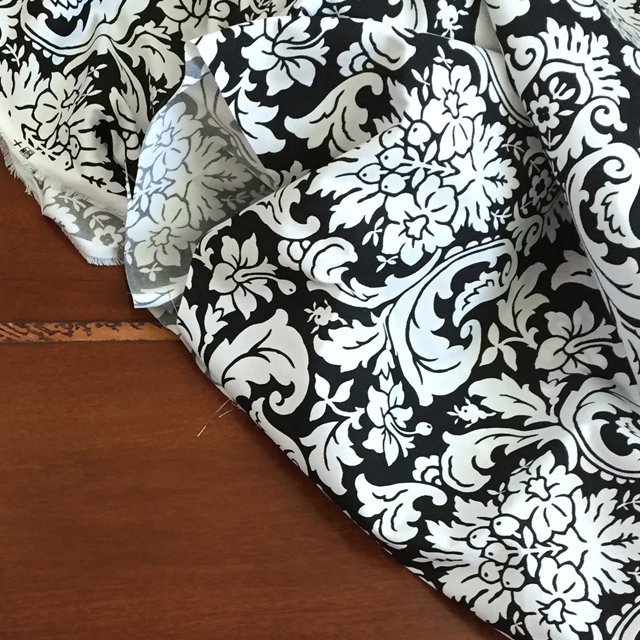
Turning any fabric into “wallpaper” is not only SUPER EASY, if you ever get tired of it, the fabric is really easy to remove. This works for fabric on walls, too!
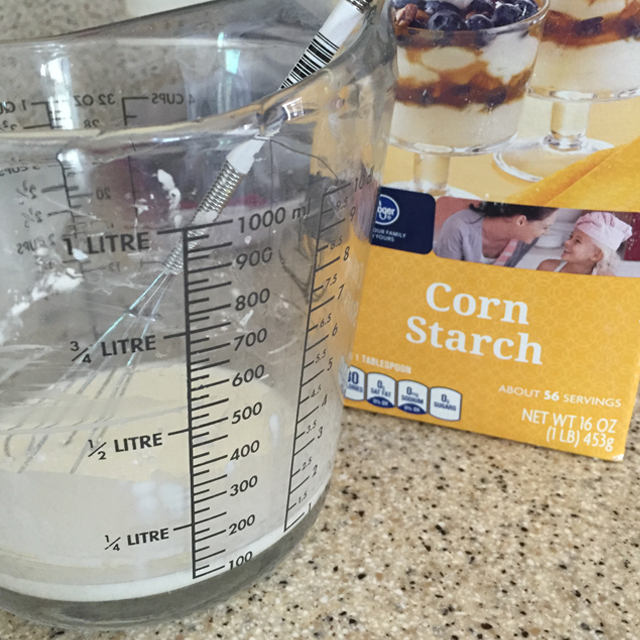
- Whisk together 1/4 C Corn starch with about 1/4 water
- Add mixture to 2 c boiling water and whisk until mixture thickens
- Remove from heat and allow to cool
This makes a LOT of paste! I barely used any for this project.
I laid my hutch back on the floor and lined up my fabric on top of it. Then, I folded half the fabric back and brushed my paste onto the hutch backing. Then, I simply unfolded the fabric and smoothed it over the backing. I repeated these steps with the right half of my hutch back. It is easy to smooth the fabric out. Allow to dry. The corn starch paste dries nice and clear.
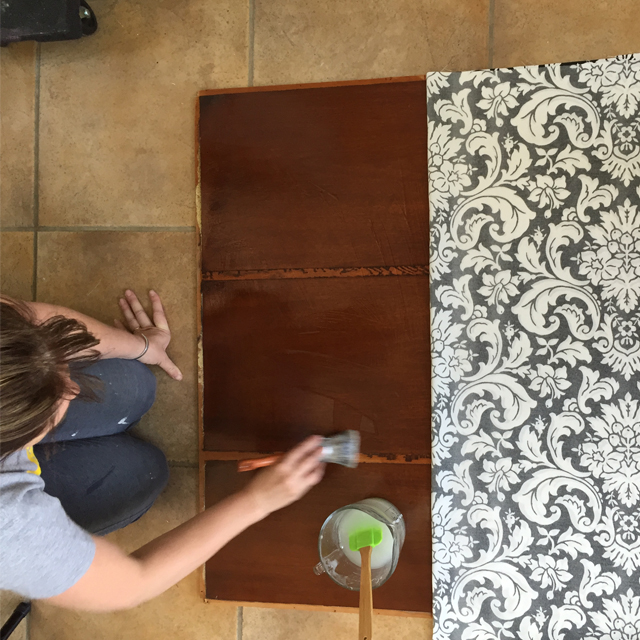
I trimmed the fabric to fit the hutch back after it was glued on, then I used a nail gun to re-attach the hutch backing, and voilà!
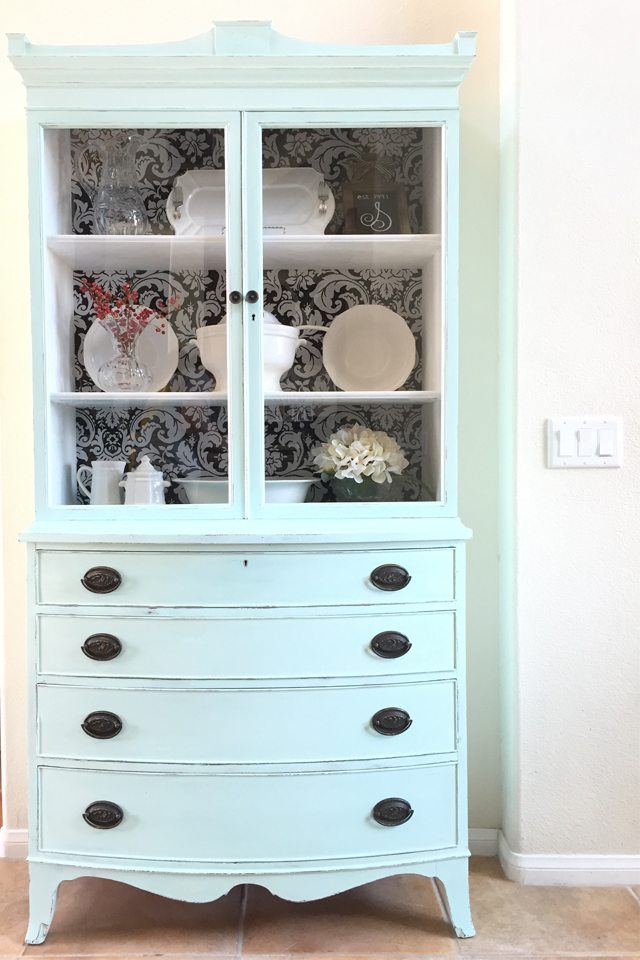
Just in case you forgot what it looked like before, here’s a side-by-side comparison:
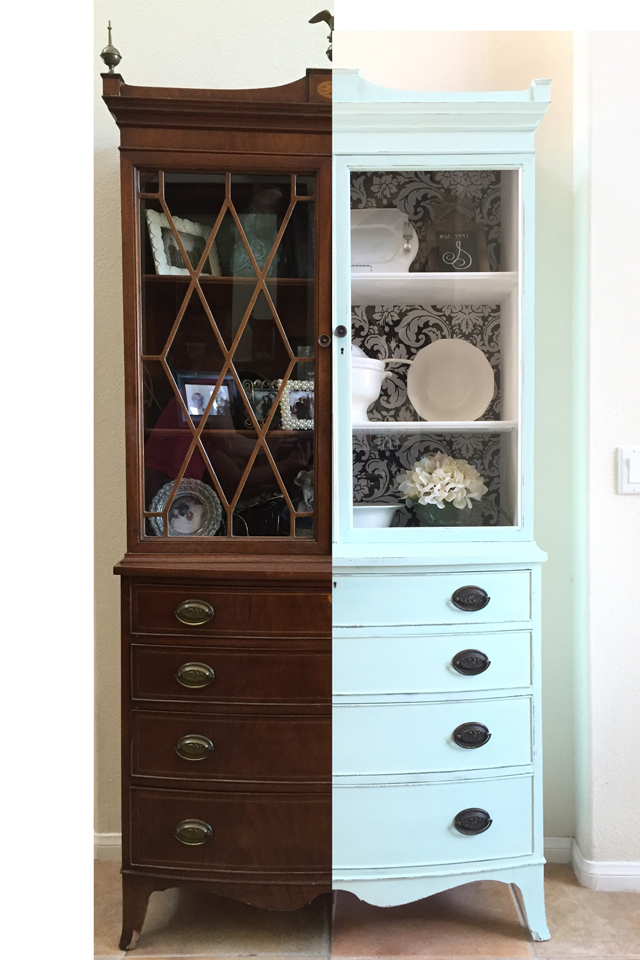
I am in love with the fabric back!
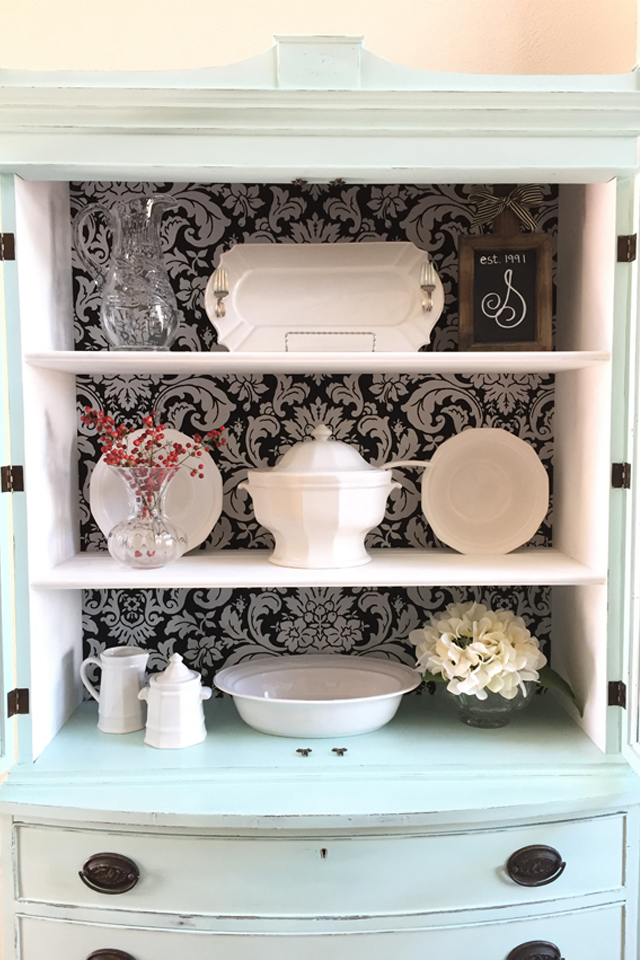
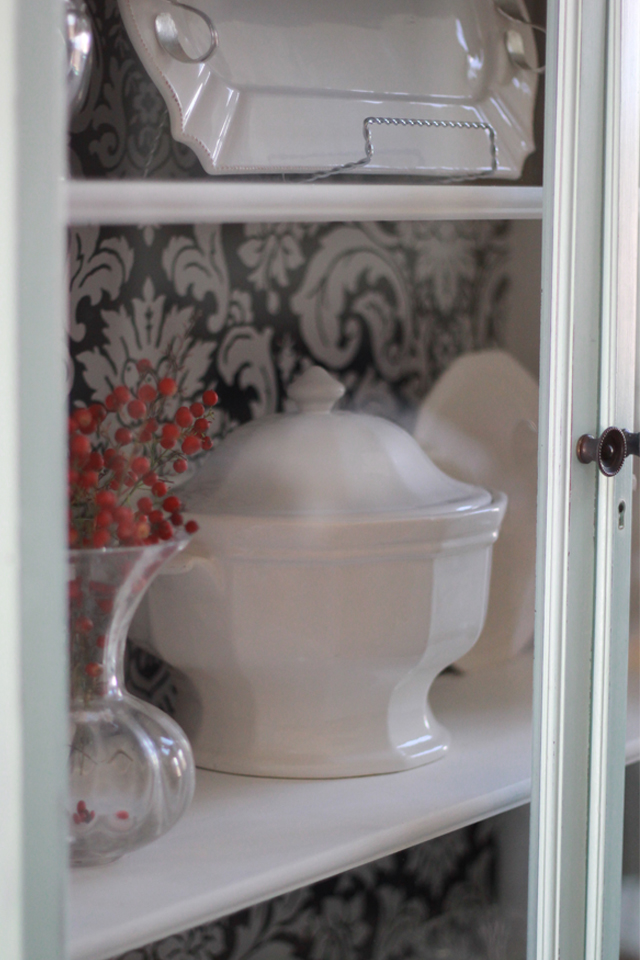
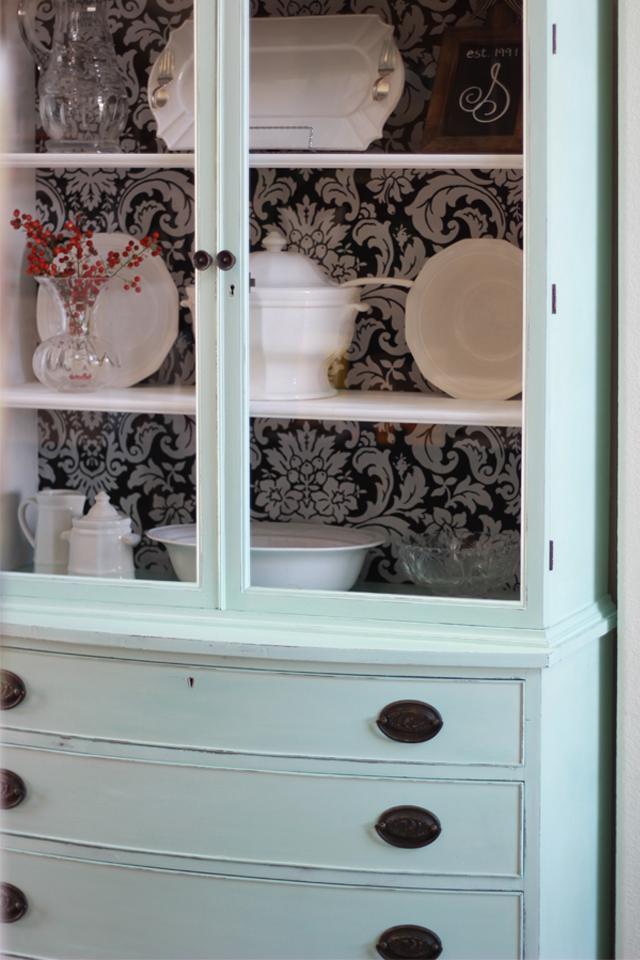
So much lighter and brighter!

Looking for more BB Frösch Inspiration? Check out BB Frösch on Facebook, Pinterest and Instagram.
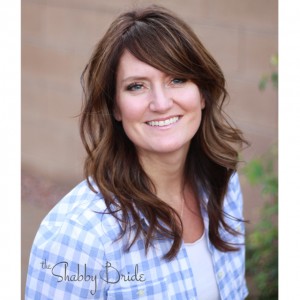

Awesome transformation! A few areas in my home could do with a good-old polish up like this (if that’s what you can call it)! Thanks for sharing…
http://www.makemeupmarie.com
xoxo
Not reusing the glass insert made a real update look! Sometimes less is more on some pieces. I am so new at this furniture make over and learning. Thankyou for the step by step directions. It’s beautiful.
May I ask why you used “chalk paint”. Can you write on it? Also how did you put the glass back on???? I want to do this to my grandma’s antique hutch.
Melissa–Chalk paint is NOT the same as chalkboard paint. I use chalk paint because it bonds to my surface without having to do any prep work (no sanding, priming, or stripping–just start painting.) The glass was held in by tiny cove molding. I removed the molding to release the glass for painting, then re-attached the molding using a pin nailer.
In the paste recipe, what is the 1/4 water? Is it a cup or something else?
Whisk together 1/4 C Corn starch with about 1/4 (what measure here?) water
Tara–
Oh geez, with all the proof-reading, I missed a pretty important detail! Yes, it’s 1/4 C Water.
Can you use your corn starch method on an enamel paint or do I need to scruff it first?
Jeanette–
The cornstarch method for creating fabric “wallpaper” works on pretty much any surface–painted or not!
The cornstarch method for the wallpaper, does it work with paper instead of fabric? Any idea? I mean kinda like wheatpasting perhaps. Or is that wheatpasting ?lol.
Turned out beautiful BTW!
Thank you for the information on the chalk paint powder! I have a gallon of nice quality paint that I wanted to use for a couple of projects where I didn’t want to sand/prime. Had no idea this was an option — thank you!
How did you go about removing the fretwork /latticework from the front of your cabinet? Mine is held in place by the glass and the glass has a trim of wood all around it held in with headless brads. Not sure how to remove the brads without breaking the glass.
Joan–
Gently pry the wood trim away from the glass near where the pin nails are holding it in. You should be able to remove all the trim that is holding the lattice in nicely this way!
Just found your pin and I am going to use your methods. I have never used chalk paint and now understand the reason people use it – no sanding. I have to think that the wax after the paint makes things smooth. I wasn’t sure why people use the wax. Your instructions are terrific. I also love the cornstarch paste as I wondered how I would attach fabric that I have seen done before. Thanks so much for your inspiration!